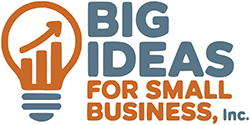 March is Women’s History Month and a good time to reflect on how women are doing in business. According to American Express’ 2017 State of Women-Owned Businesses Report, women entrepreneurship continues to rise.
March is Women’s History Month and a good time to reflect on how women are doing in business. According to American Express’ 2017 State of Women-Owned Businesses Report, women entrepreneurship continues to rise.
Here are some key statistics about women-owned businesses:
- There are an estimated 11.6 million women-owned businesses in the U.S. (46% of which are owned by minorities)
- These businesses account for 39% of all U.S. businesses.
- They employ nearly 9 million workers (8% of the private workforce).
- They generate $1.7 trillion in revenue (4.2% of total business revenues).
- Over the past 20 years, the number of women-owned businesses has grown by 114% (compared with overall national growth of 44%).
Where it’s happening
“Economic clout” is the growth in the number of companies and growth in employment in revenues. Some locations have seen greater economic clout than others. According to the American Express Report, the 5 locations with the greatest economic clout by women-owned businesses are Nevada, District of Columbia, South Dakota, North Dakota, and Georgia. Those with the lowest economic clout: Arkansas, Illinois, Ohio, West Virginia, and Nebraska.
Looking ahead
The National Women’s Business Council (NWBC) 2017 Annual Report is about “Accelerating the Future of Women Entrepreneurs.” The Council studied supplier diversity programs, commercialization among women in STEM fields, incubators and accelerators, crowdfunding, social entrepreneurship, and millennial, Black, and Hispanic women entrepreneurship. It made several recommendations that could help to improve women entrepreneurship:
- Increase funding to the SBA’s Women’s Business Center (WBC) program;
- Extend the SBIR/STTR pilot programs through 2022;
- Enlarge or make permanent the New Markets Tax Credit (NMTC) Program; and
- Lift or raise the cap on SBA-backed loans for all small businesses, and, specifically, those from under-served communities.
Bottom line
Despite high visibility of women leading Fortune 500 companies (e.g., Mary Barra at GM, Mary Dillion at Ulta Beauty, Shira Goodman at Staples, Vicki Hollub at Occidental Petroleum, Indra Nooyi at Pepsi, and Phebe Novakoic at General Dynamics), some may argue that there’s still a glass ceiling (an intangible barrier within a hierarchy that prevents women from obtaining upper-level positions) in corporate America.
But women entrepreneurs haven’t let barriers—lack of access to capital, exclusion from the old boy network—keep them from starting amazing businesses. Who knows what great statistics I can share next year about women entrepreneurs?


